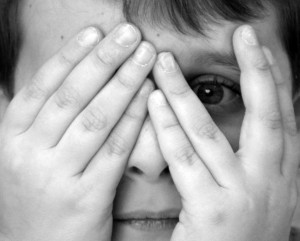 Children who have been traumatized exhibit anxious behaviors and often have a lot of “worries.” On June 22, 2011, Dr. William Steele, founder of the National Institute for Trauma and Loss in Children, will present a webinar, “What do parents/guardians really need to know about childhood trauma?” and will address some of the ways to help children and adolescents with trauma symptoms. According to Steele, today’s children and teens are steadily becoming more anxious; recent catastrophic events such as war, economic down turns, violence and natural disasters have possibly contributed to this increase in worried responses.
Children who have been traumatized exhibit anxious behaviors and often have a lot of “worries.” On June 22, 2011, Dr. William Steele, founder of the National Institute for Trauma and Loss in Children, will present a webinar, “What do parents/guardians really need to know about childhood trauma?” and will address some of the ways to help children and adolescents with trauma symptoms. According to Steele, today’s children and teens are steadily becoming more anxious; recent catastrophic events such as war, economic down turns, violence and natural disasters have possibly contributed to this increase in worried responses.
There may be other more subtle reasons for the persistence of anxiety in this generation of young people. For example, anxiety and depression correlate to our sense of control or lack of control over events in our lives. It is widely accepted that individuals who perceive that they are in charge of their lives are less likely to become worried or sad than those who feel victimized by similar experiences. If you remember your Psychology 101 course, you might recall the standard measure of a sense of control by Julien Rotter in the late 1950s—the Internal-External Locus of Control Scale. Internal control represents the beliefs about control that come from the individual and external control represents the beliefs about circumstances outside of the individual’s control. In brief, studies based on this measure have consistently shown that people who score higher in areas of internal control fare better [less anxiety and depression] than those who score higher in external control areas.
So is there evidence that there has been a decline in children’s and adolescents’ sense of internal control in recent years? From what researchers have learned over several decades, yes there has been a decline and at the same time, an increase in anxiety and depression. For example, Jean Twenge and colleagues (2004) studied young people ages 9 through 14 and college students from 1960 to 2002 and discovered that by 2002 the average young person was more externally-oriented when compared to individuals in 1960. This trend paralleled a rise in depression and anxiety during the same time period.
How do you know when anxiety is more than just passing “worry?” Here is a short list of some indicators found in children and adolescents:
- When children and adolescents can no longer perform or enjoy activities enjoyed by their peers;
- When anxiety is persistent, lasting more than a month;
- When anxiety distresses the entire family system [tension and anxiety during activities that normally are enjoyable];
- When young people avoid activities that normally require independence or become overly dependent on parents and caretakers;
- When there is avoidance of social activities [fears of social scrutiny and criticism];
- When there is constant need for reassurance and/or perfection-oriented behaviors;
- When there are unexplained physical symptoms like headaches and stomachaches.
Family histories of anxiety may contribute to an increased risk for anxiety disorders in children as do temperament and personality. Of course traumatic events, particularly repeated incidents, may contribute to that risk. Children and adolescents experiencing extreme levels of parental or family stress [divorce, domestic violence, homelessness, etc] are at higher risk for anxiety and depression. In working with families with anxious children, I often initially ask parents the following questions:
- On a scale of 1 to 10, 10 being the highest, how bad do you think your child’s problem is?
- On the same scale, how hard is the problem to manage? Are there days when the problem is worse? Give me an example of one or two of those days.
- Are there days when the problem is not so bad? Give me an example of one or two of those days if you can.
- What do you feel contributes to your child’s anxiety?
Because these questions may not be easily answered, I often ask parents to show me on a visual scale how “big” the problem is and draw images of “good” and “bad” days. Depending on the parent, I might even ask, “what does your anxiety look like when your child is anxious? Can you draw me a picture of that or pick out some magazine photos from these collage materials to show me?”
How is it that some children and adolescents with anxiety do better than others when faced with the same traumatic events? What can parents do to ease their child’s fears while building their resilience in a world that is frightening for adults as well? Dr. Steele will be addressing these and a number of topics related to anxiety in young people along with a variety of practical tips about how to help traumatized youth move from victims to survivors to thrivers. To register, see this webpage and read more about future webinars, too.
Be well,
Cathy Malchiodi, PhD, LPAT, LPCC
Reference
Twenge, J. M., Zhang, L., & Im, C. (2004). It’s beyond my control: A cross-temporal meta-analysis of increasing externality in locus of control, 1960-2002. Personality and Social Psychology Review, 8, 308-319.


